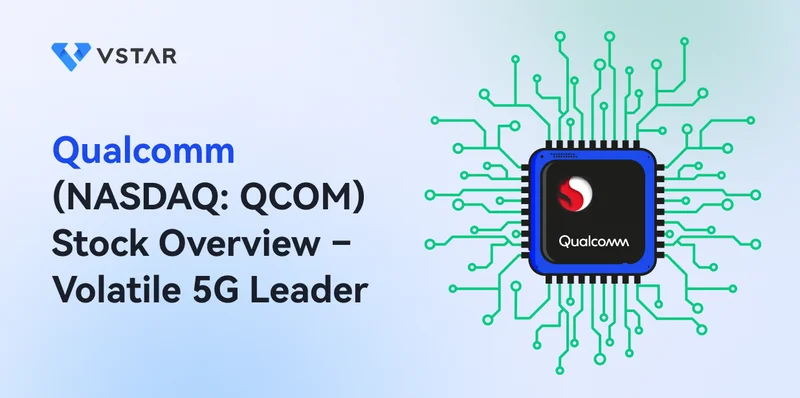The Silence from Qualcomm: Why the Void is More Exciting Than the News
I hit a wall today. Not a metaphorical one, but a literal, digital one. A sterile, white page with black, emotionless text: "Access Denied." I was digging around for some deeper technical specifications, some roadmap whispers about what’s next for Qualcomm’s on-device processing, and was met with… nothing. A void. An empty room where I expected a library.
My first reaction wasn’t frustration. It was a jolt of pure, unadulterated excitement. When I first saw that blank page, I honestly just leaned back in my chair and smiled. In our hyper-saturated world of endless press releases, curated leaks, and 24/7 news cycles, silence is the most interesting sound you can hear. It’s the sound of real work being done. It’s the sound of a secret.
We’ve become addicted to the drip-feed of information, the steady stream of incremental updates that make us feel like we’re moving forward. A 10% faster chip, a slightly better camera sensor, a new software feature. But true revolutions don’t announce themselves with a press release. They gestate in silence. They are built behind closed doors by teams of brilliant people who are too busy changing the world to talk about it. What if this digital wall I hit wasn't a barrier, but a curtain? And what if, behind it, they’re rehearsing the next act of our technological evolution?
The Hum of a Hidden Engine
When a company as foundational as Qualcomm goes quiet on a specific front, the vacuum it creates is immediately filled with the hum of human imagination. I fell down the rabbit hole, scrolling through Reddit threads and engineering forums, and what I found was beautiful. It wasn’t the usual cynical noise. It was a collective, hopeful brainstorming session. People weren't just guessing at specs; they were dreaming about possibilities. "What if it's not about running cloud models locally," one comment read, "but about a new type of model that can only exist locally?" Another speculated on "neuromorphic chips that learn from their user's unique sensory input."
This is the kind of breakthrough that reminds me why I got into this field in the first place. This is where the real energy is—not in the polished keynotes, but in the collective gasp of anticipation from a community that senses a paradigm shift is coming. The silence from the source forces us to think bigger. It frees us from the constraints of what is and invites us to imagine what could be.

And what could be? Are we just talking about a faster phone? I don’t think so. I think we’re on the verge of something far more profound. This isn't just about faster processing—in simpler terms, it's about giving our devices genuine cognitive autonomy. It’s about moving from a world where we command our tools to a world where we collaborate with them. What does a device look like when it doesn't need to "phone home" to the cloud to think? How does our relationship with technology change when it becomes truly, intimately, and privately ours?
From Mainframe to Mind-Frame
Think about the leap from the mainframe computer to the personal computer. It wasn't just a change in size; it was a fundamental change in our relationship with information. It democratized computing, taking it from a handful of institutions and putting it into the hands of individuals. We’re standing at the threshold of a similar leap right now.
The current model of AI, for all its power, is still a mainframe model. Our devices are mostly elegant terminals connected to massive, centralized server farms. The real "thinking" happens somewhere else. This is a powerful architecture, but it’s also a tether. It keeps our data, our privacy, and our digital identity in the hands of a few large gatekeepers.
The next revolution is the untethering. It’s the creation of on-device AI that is so powerful and efficient it can learn, reason, and create right there in your hand, completely independent of the cloud. This is the technological equivalent of moving from a centralized library you have to visit to having a universal library engraved on a grain of sand in your pocket. Imagine a world where your creative partner, your personal assistant, and your data analyst doesn't live on a server in Virginia but right there on the silicon you hold—this is the kind of future that silence is a prelude to, a world where technology becomes less of a tool and more of a truly personal companion.
Of course, this leap comes with immense responsibility. As we design these new cognitive architectures, we must simultaneously design the ethical guardrails. How do we ensure privacy when a device knows us better than we know ourselves? How do we maintain our autonomy? These aren't afterthoughts; they are the central design questions of the next decade. We have to build the conscience right into the code. But the challenge doesn't diminish the promise. The promise is a world that is more personalized, more private, and more profoundly human.
The Future Isn't Loud
So, that "Access Denied" page? It wasn't a dead end. It was a signpost pointing toward a horizon we can’t quite see yet. The real story isn't in the information we're given, but in the questions the silence inspires. The future isn’t arriving with a bang or a triumphant keynote. It’s being built quietly, diligently, behind a simple digital curtain. And when that curtain finally rises, it won't just be an upgrade. It will be a revelation.









